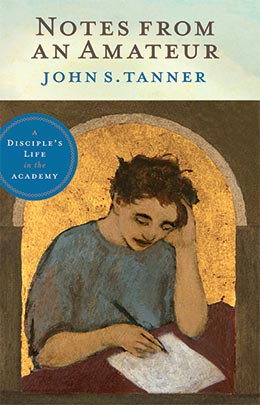Pruning
John S. Tanner, Notes from an Ameteur: A Disciple’s Life in the Academy (Provo, UT: Religious Studies Center; Salt Lake City: Deseret Book, 2011), 50–2.
It is pruning season again. I dread this time of year. Over the winter, my fruit trees have been surreptitiously branching out in now exuberant displays of wild abundance. I look out my window, see what mischief they have been up to, and know a day of reckoning between me and my garden is near. But I dread the day. For I am a lousy pruner.
I am a good weeder, but by comparison weeding is a relatively simple task. The weeder’s work is straightforward. He operates in a Manichean world, divided between the forces of darkness and the forces of light. His is the warrior mentality: to search and destroy the enemy and thus liberate innocent nature from the stranglehold of evil.
Pruning requires a different mindset. It entails a more discriminating, delicate approach. It requires the surgeon’s art rather than the soldier’s. For the pruner cuts into a living plant he wants to preserve, not uproot and destroy. He amputates to prevent further decay. He thins current abundance, confident in greater future abundance. While weeding entails simple moral choices between good and evil, pruning requires subtle prudent choices among competing goods; e.g., which one of these good branches will produce the best fruit; which of these many potential fruitful limbs should be saved and sliced off in order to let others flourish?
At BYU, as perhaps in most organizations, we are better at weeding than at pruning. When the choice is between good and evil, we stand tall. But when the choice is between competing goods, then we find it harder to discern where wisdom lies, even if we are prepared to act courageously. When choices must be made among good, better, and best, we need a master pruner’s wisdom to choose the best.
For years, both the Board and BYU presidents have tried to get us to engage seriously in institutional pruning. In his “Second-Century Address,” for example, President Spencer W. Kimball used a cognate metaphor, describing the need to replace planks in the good ship BYU to keep it seaworthy.
President Jeffrey R. Holland was wont to say that because BYU can’t do everything, what we choose to do we must do superbly well. Likewise, during the Rex E. Lee and Merrill J. Bateman administrations, many units engaged in self-study and some in significant restructuring. We are now in a period when the Board has imposed strict caps on enrollment, full-time employees, and square footage, requiring us to make hard choices among competing goods. These limits enforce a pruning discipline upon the campus, captured by President Cecil O. Samuelson’s oft-repeated mantra, “If you want to add something, what are you prepared to cut?”
Pruning can be gut-wrenching work, whether in our backyards or at BYU. It can seem a cruel labor too. But fall harvests remind us that pruning is in fact a labor of love. So does the allegory of the vineyard in Jacob 5. God sends his servants to prune his vineyard because he wants it to flourish and bear fruit. Over and over we hear that it “grieveth” the Lord to lose his overgrown trees. So his servants and his son are required not only to dung his trees but also to lop off branches that overburden the roots.
We have no less a responsibility to prune our part of the vineyard if we are to cultivate a fruitful harvest at BYU. Let us master the pruner’s art, the basic principle of which is to let light in so the fruit can flourish. Let us let the light into our 415 programs, our curriculum, and our syllabi—all of which tend to become overgrown without regular pruning. The pruner knows that less truly can be more and that fruitful teaching is as much about what we uncover as what we cover.
